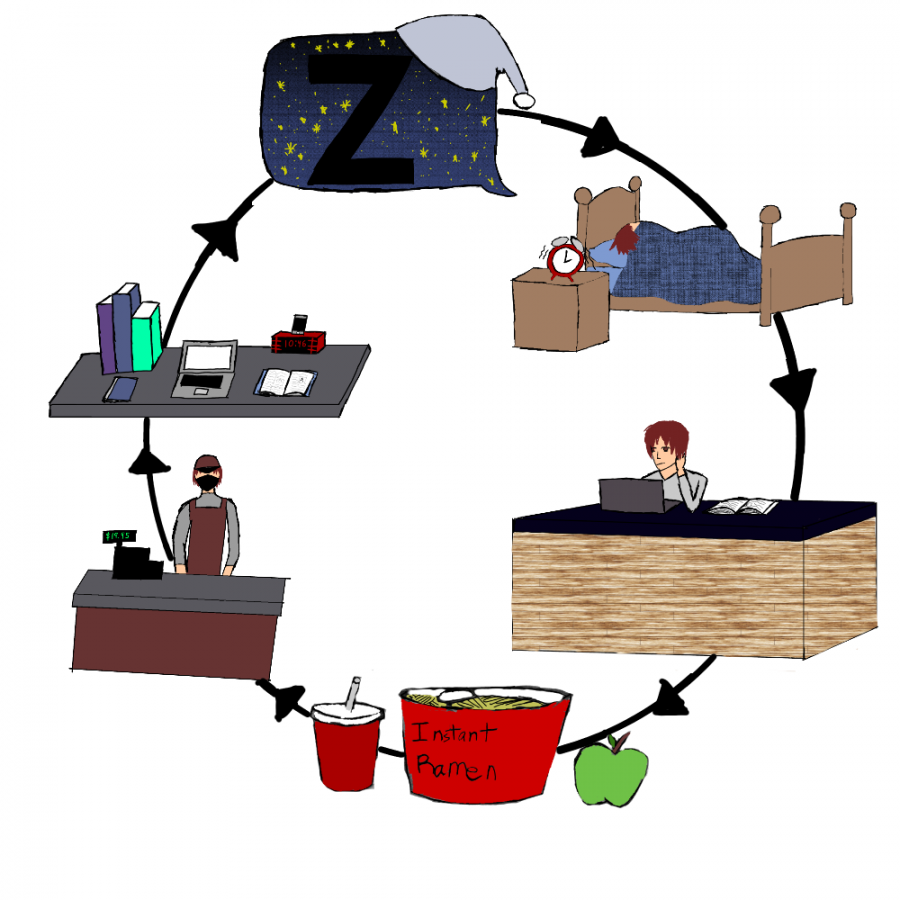The machine whirls from place to place, building an object soon to have dimensions, to have depth. The machine’s nozzle secretes a plastic alloy, building, from the ground up, a wholly new object, imbued with more meaning than just the sculpture it is creating.
Art teacher Casi Brown bought a 3D printer for the art program because of its increase in popularity. “I’ve been noticing a lot of artists starting to utilize those mediums,” Brown said. “I thought [the 3D printer] would be a great way to incorporate those new technologies.”
The new printer is used as “a time-saving device,” Brown said. Usually, the students in her jewelry class only make three pieces of jewelry in a semester using older methods. However, people were wanting to buy the jewelry, but Brown said, “it’s kind of hard to let go of those three pieces, and so I thought, another way to have a little jewelry sale would be to 3D print jewelry multiples,” thereby allowing more pieces to be made.
The effects of the printer, however, will not only be felt on the output levels of the art classes. In possible future jobs, such as “in movies and character design,” according to Brown, they “use similar design processes.” Even if the student goes into a different position, “such as a jeweler or a sculptor,” or a more technical, less creative job like “in automotive design,” the designing processes are similar.
And in a world where processes like 3D printing are becoming the norm, having previous experience could open newjob opportunities for students. According to a 2018 study done by Sculpteo, a 3D printing company, 64% of aeronautics companies use 3D printing in production.
One of Brown’s sculpture students, senior Mary Catala, is a frequent user of the printer and is familiar with the process of using the printer.
“I’ve scanned pieces, cleaned them, and printed them using the machine,” Catala said. “I’ve had to cut pieces of plastic and file the sculpture down. It can take a really long time.” Typically, this process lasts around three weeks.
Catala’s pieces are not simple and take quite a lot of work both in the physical realm and the electronic. To start, Catala decides on what she wants to do, then she designs it, ending the process by scanning and finally printing the piece. Catala sees the 3D printer as a way to increase productivity and make the whole process more efficient. “When people want to make more of one thing, it can take a really long time,” Catala said. “With the printer, it is a lot faster to reprint the same thing multiple times over in a reduced amount of time and make lots of one thing.”
Art From The Ground Up
Art students create jewelry, sculpture with new 3D printer
Dezmond Remington, Co-Editor in Chief
May 2, 2019
0
Donate to WHIRLWIND
$150
$2000
Contributed
Our Goal
Your donation will support the student journalists of West Albany High School. Your contribution will allow us to purchase equipment and cover our annual website hosting costs.
More to Discover
About the Contributor

Dezmond Remington, Co-Editor in Chief
I am the Co-Editor in Chief of the Whirlwind, and this is my third year on staff. I hope to do this for a living at some point.

